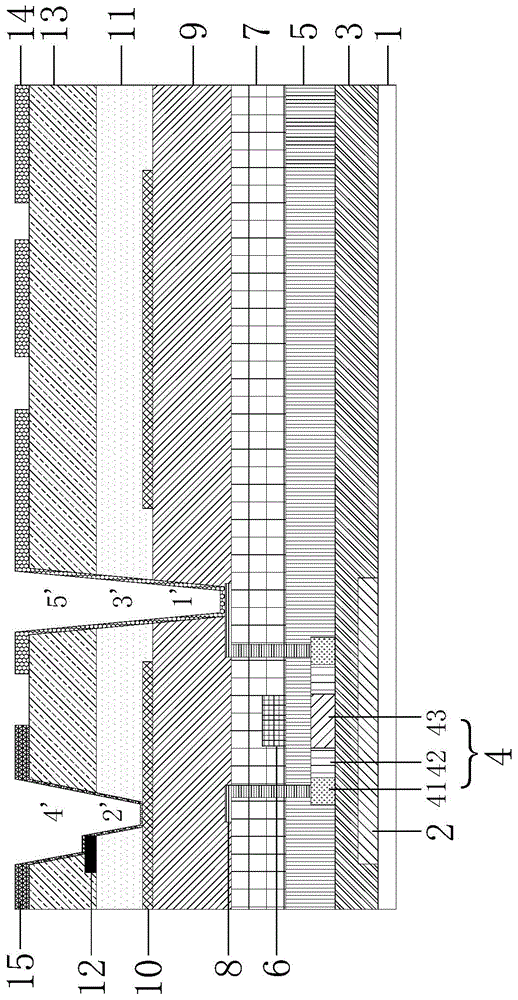Touch control display device, manufacturing method thereof and electronic equipment
A touch display device and touch electrode technology, which is applied to circuits, electrical components, electrical digital data processing, etc., can solve the problems of long production cycle, large process error, complicated preparation process, etc., and achieve low production cost and process error. The effect of small size and simple preparation process
- Summary
- Abstract
- Description
- Claims
- Application Information
AI Technical Summary
Problems solved by technology
Method used
Image
Examples
Embodiment Construction
[0042] The implementation of the present invention will be described in detail below in conjunction with the accompanying drawings and examples, so as to fully understand and implement the process of how to apply technical means to solve technical problems and achieve technical effects in the present invention. It should be noted that, as long as there is no conflict, each embodiment and each feature in each embodiment of the present invention can be combined with each other, and the formed technical solutions are all within the protection scope of the present invention.
[0043] The technical problem to be solved by the present invention is: when preparing the fully embedded touch display device in the prior art, the formation of the via hole 1 used to connect the touch electrode and the common electrode, and the via hole 1 used to connect the pixel electrode and the thin film The formation of via hole 2, via hole 3 and via hole 4 of the metal layer of the data line of the tra...
PUM
 Login to View More
Login to View More Abstract
Description
Claims
Application Information
 Login to View More
Login to View More - R&D
- Intellectual Property
- Life Sciences
- Materials
- Tech Scout
- Unparalleled Data Quality
- Higher Quality Content
- 60% Fewer Hallucinations
Browse by: Latest US Patents, China's latest patents, Technical Efficacy Thesaurus, Application Domain, Technology Topic, Popular Technical Reports.
© 2025 PatSnap. All rights reserved.Legal|Privacy policy|Modern Slavery Act Transparency Statement|Sitemap|About US| Contact US: help@patsnap.com



